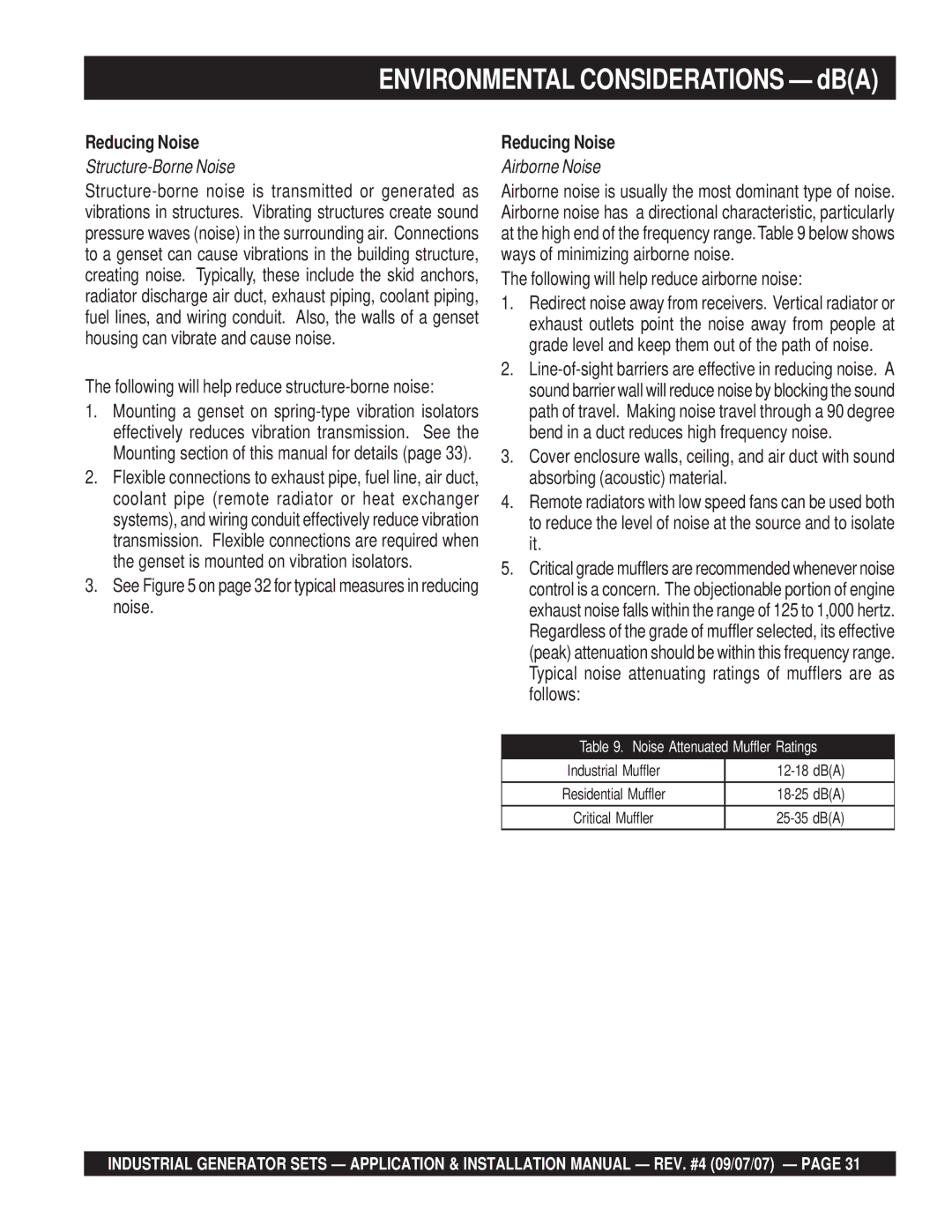
ENVIRONMENTAL CONSIDERATIONS — dB(A)
Reducing Noise
Structure-Borne Noise
The following will help reduce structure-borne noise:
1.Mounting a genset on
2.Flexible connections to exhaust pipe, fuel line, air duct, coolant pipe (remote radiator or heat exchanger systems), and wiring conduit effectively reduce vibration transmission. Flexible connections are required when the genset is mounted on vibration isolators.
3.See Figure 5 on page 32 for typical measures in reducing noise.
Reducing Noise
Airborne Noise
Airborne noise is usually the most dominant type of noise. Airborne noise has a directional characteristic, particularly at the high end of the frequency range.Table 9 below shows ways of minimizing airborne noise.
The following will help reduce airborne noise:
1.Redirect noise away from receivers. Vertical radiator or exhaust outlets point the noise away from people at grade level and keep them out of the path of noise.
2.
3.Cover enclosure walls, ceiling, and air duct with sound absorbing (acoustic) material.
4.Remote radiators with low speed fans can be used both to reduce the level of noise at the source and to isolate it.
5.Critical grade mufflers are recommended whenever noise control is a concern. The objectionable portion of engine exhaust noise falls within the range of 125 to 1,000 hertz. Regardless of the grade of muffler selected, its effective (peak) attenuation should be within this frequency range. Typical noise attenuating ratings of mufflers are as follows:
Table 9. Noise Attenuated Muffler Ratings
Industrial Muffler | dB(A) | |
|
|
|
Residential Muffler | dB(A) | |
|
| |
Critical Muffler | ||
|
|
|
INDUSTRIAL GENERATOR SETS — APPLICATION & INSTALLATION MANUAL — REV. #4 (09/07/07) — PAGE 31
